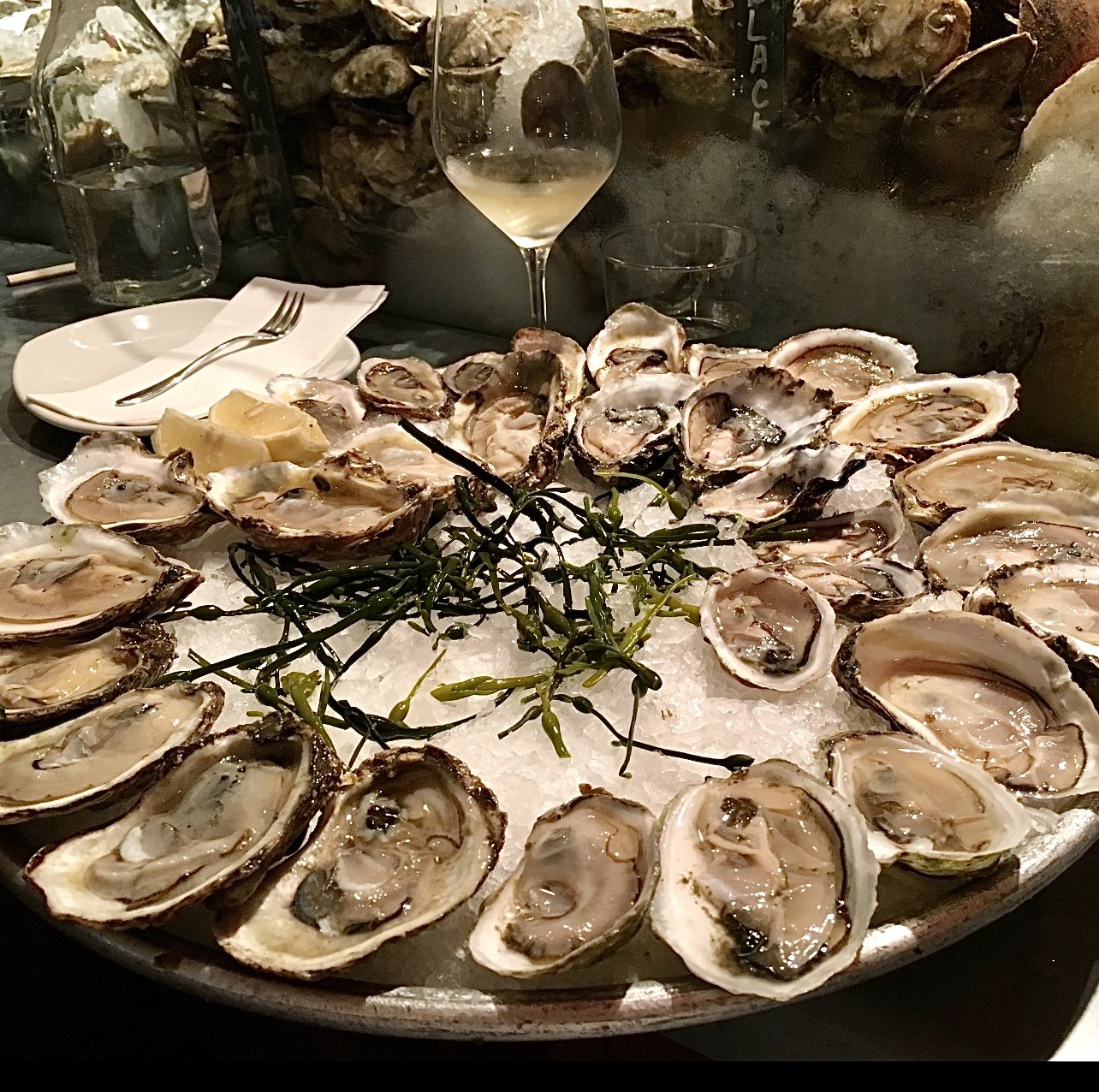Mad for Muscadet
/Looking for a delicious, palate refreshing wine to go with hot summer days?
Look no further than Muscadet, a white wine that easily fits the bill. This bone-dry example from France’s Loire Valley tends to be lean and crisp, yet fuller, richer versions can also be found.
A Seafood Sipper
Known to pair extraordinarily well with oysters, Muscadet is mineral-driven with a food-enlivening salinity—think crushed rocks and sea salt. The wine is a winner with other types of seafood as well: mussels steamed with wine, garlic and parsley, and broiled cod with a watercress sauce are two of many dishes that come to mind.
The longer-aged, richer styles of Muscadet can even pair well with chicken or pork: crispy-skinned roast chicken, chicken francese with lemon and butter, or grilled pork tenderloin rubbed with smoky paprika.
Quietly Charming
In The New York Times, Eric Asimov says that the grape doesn’t always get its due. Sadly, it’s true that there are some insipid Muscadet wines being made, but overall the trend in the region recently has been a focus on high quality production.
Additionally, Muscadet’s charms tend to be subtle, causing wine drinkers to overlook them, and that is a shame.
“Melon de Bourgogne is sometimes referred to condescendingly as a “neutral grape,” says Asimov. “Though Muscadet is typically thought to be made for drinking young, with little to recommend it beyond a bracing freshness, wines from these producers have shown that it has far more going for it: that it is delicious when young, but can also age and evolve. It’s especially enjoyable to consumers who can look beyond the obvious and tune in to its subtleties.”
Tip: Don’t drink Muscadet too cold; the wine’s full array of aromas and flavors only begins to blossom when left out of the fridge, or off of ice, for about fifteen minutes.
Mad For Melon
photo of Melon de Bourgogne grapes: Wine Folly.
Made from the Melon de Bourgogne grape, Muscadet is produced in the most westerly area of the Loire Valley, on the Atlantic coast, to the southeast of the city of Nantes.
Many of the wines, those labeled sur lie, are aged on the lees (the dead yeasts) for a minimum of six months. These wines have a slightly creamy texture with hints of yeastiness in the flavor. There are three districts that can produce ‘sur lie’ Muscadet, with Muscadet Sèvre et Maine the most well-known, and the other two being Muscadet Coteaux de la Loire and Muscadet-Côtes-de-Grandlieu. Together these three appellations form the core of Muscadet wines.
Muscadet Cru Wines
Proof that the region has evolved, from its reputation as a region of sub-par wines to a place where quality now reigns supreme, are the newly designated crus. These ten, high quality vineyards—Clisson, Gorges, Le Pallet, Goulaine, Château Thébaud, Mouzillon Tillières, Monnières Saint-Fiacre, La Haye Fouassière, Vallet and Champtoceaux—each with its own distinct personality, produces wines with a richness of complexity, depth and flavor.
A reflection of their terroir, these small-production cru wines are well worth getting to know if you can find them. Best when aged for a few years or longer, they can be enjoyed young, but become more opulent and fascinating with time in the bottle.
Thirsty for more? Look for these top producers of Muscadet:
Domaine de la Pépière
Domaine de l’Écu
Domaine de la Chauvinière
Jo Landron
André-Michel Brégeon
Domaine Haute Févrie
Domaine du Haut Bourg
Pierre Luneau-Papin
Vincent Caillé
Not only is Muscadet a delicious, food friendly wine, it also offers a great bang for the buck, with most of the wines in the $15-25 range.
Many thanks to InterLoire, the official professional body for Loire Valley wines, who sponsored my visit to the region.



























